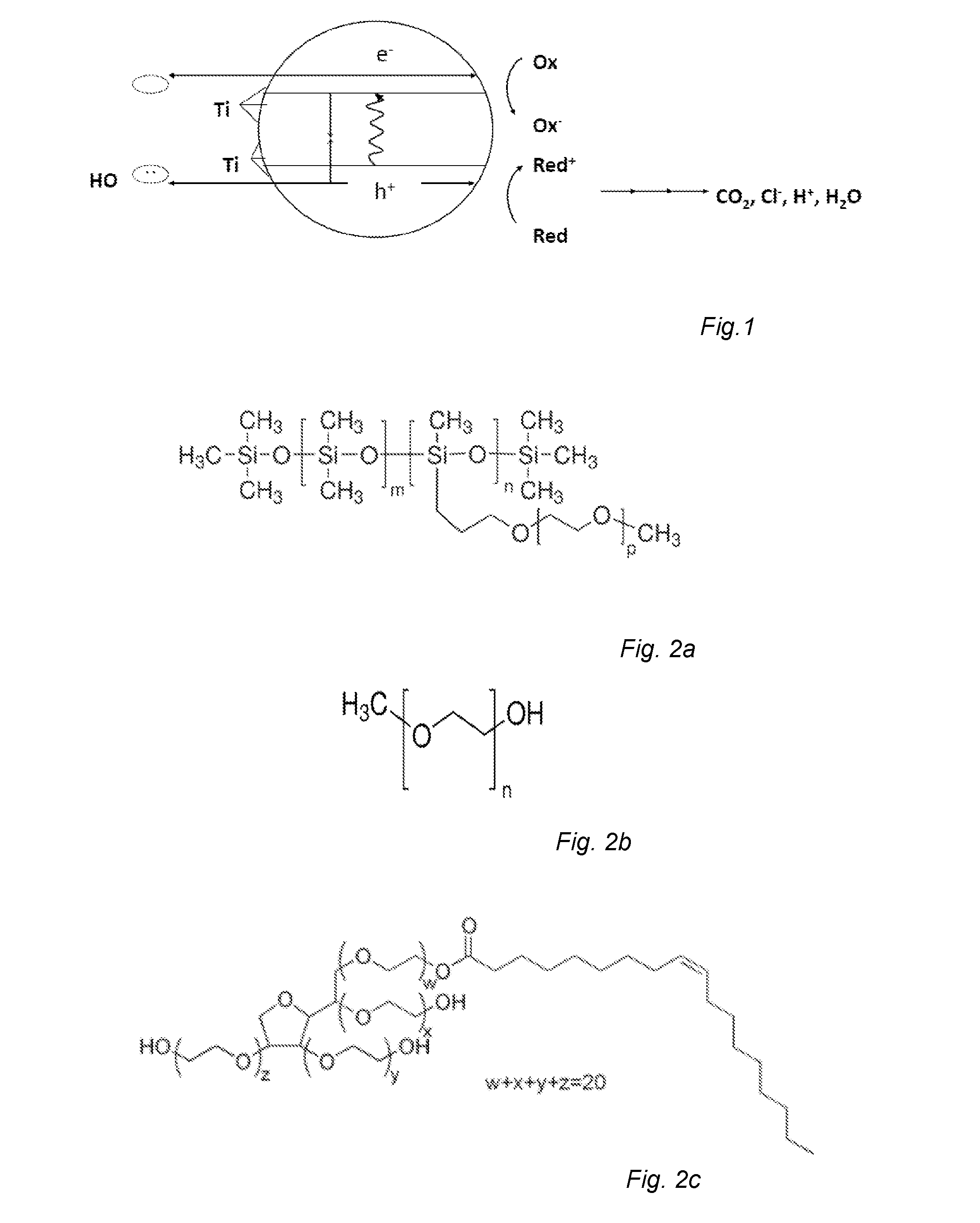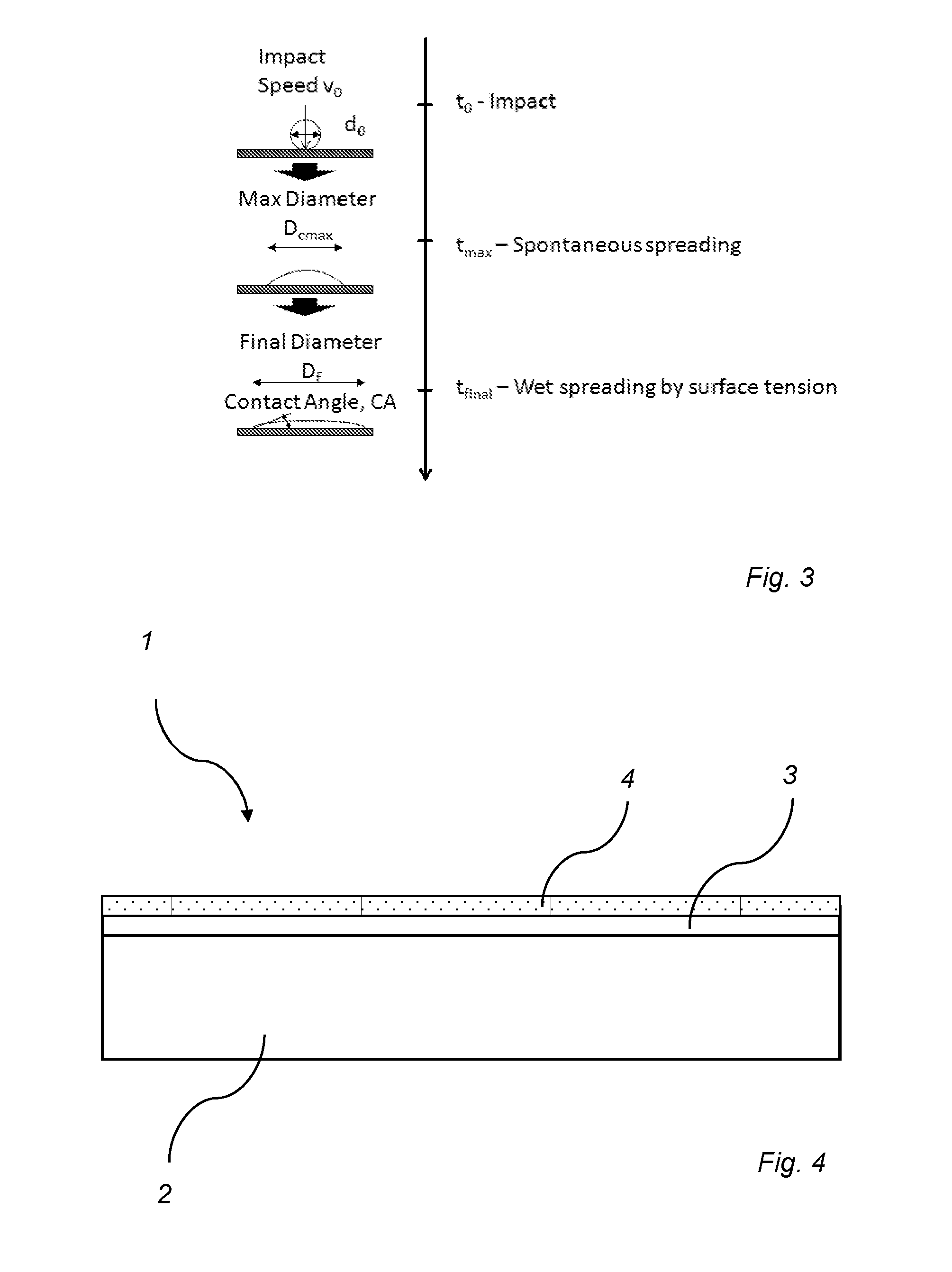Photocatalytic composition
a technology of composition and photocatalysis, applied in the direction of organic compound/hydride/coordination complex catalyst, physical/chemical process catalyst, metal/metal-oxide/metal-hydroxide catalyst, etc., can solve the problems of lack of colour fastness, and inability to achieve photogrey, etc., to achieve the effect of reducing or eliminating photogreying
- Summary
- Abstract
- Description
- Claims
- Application Information
AI Technical Summary
Benefits of technology
Problems solved by technology
Method used
Image
Examples
example 1
[0136]Application of the photocatalytic composition to form a 10 μm coating on an overlay paper conforming to abrasion class AC6 (EN 13329). Sample A in FIG. 5a shows the overlay paper having a coating formed from a waterborne TiO2 composition comprising 0.5 vol % polyether modified polysiloxanes. Sample Bin FIG. 5b shows the overlay paper having a coating formed form a waterborne TiO2 composition comprising 16.6 vol % polyether modified polysiloxanes. Both samples are cured at ambient conditions and irradiated with 1 mW / cm2 UVA light.
[0137]FIG. 5a shows sample A after UV irradiation. FIG. 5b discloses sample B after UV irradiation. Photogreying has occurred of sample A. Sample A also shows mud cracking. Sample B shows no photogreying and no mud cracking.
example 2
[0138]Colour and Contact Angle (CA) were measured as a function of time of UVA exposure (ISO) for a reference, a thick film of nanofluid with 10 vol % polyether modified polysiloxanes (A) and a thin film of nanofluid with 12 vol % polyether modified polysiloxanes (B). The colour of a blank white reference and samples were recorded with an NCS Colour Scan before and after UVA radiation. The NCS codes were recalculated to RGB and Lab values with NCS Navigator (www.ncscolour.com). The RGB values (RGB) are used to visually present the colour / colour change and the Lab (L*a*b) values are used to calculate the Greying and the Yellowing Index.
[0139]The Photogreying index ΔL*=L*(Initial)−L*(X min)
[0140]The Yellowing index Δb*=abs(b*(Ref)−b*(Sample))
Time0 hr16.5 hr39 hr60 hrCAΔbΔLCAΔbΔLCAΔbΔLCAΔbΔLRef-52.40060.40064.42062.620er-enceA11.86055.98149.59242.292B11.92068.72063.62151.721
example 3
[0141]Colour and Contact Angle (CA) were measured as a function of time of UVA exposure (ISO) for a reference, a thin film with 0.5 vol % polyether modified polysiloxanes (A), a thin film of nanofluid with 12 vol % polyether modified polysiloxanes (B), and a thin film TiO2 particles modified with Pt with 6 vol % polyether modified polysiloxanes (C).
Time0 hr16.5 hr39 hr60 hrCAΔbΔLCAΔbΔLCAΔbΔLCAΔbΔLRef-62.00267.00269.72067.320er-enceA57.12053.23654.13647.736B18.22065.72047.42040.020C22.52017.12114.42119.021
PUM
| Property | Measurement | Unit |
|---|---|---|
| size | aaaaa | aaaaa |
| size | aaaaa | aaaaa |
| size | aaaaa | aaaaa |
Abstract
Description
Claims
Application Information
 Login to View More
Login to View More - R&D
- Intellectual Property
- Life Sciences
- Materials
- Tech Scout
- Unparalleled Data Quality
- Higher Quality Content
- 60% Fewer Hallucinations
Browse by: Latest US Patents, China's latest patents, Technical Efficacy Thesaurus, Application Domain, Technology Topic, Popular Technical Reports.
© 2025 PatSnap. All rights reserved.Legal|Privacy policy|Modern Slavery Act Transparency Statement|Sitemap|About US| Contact US: help@patsnap.com



